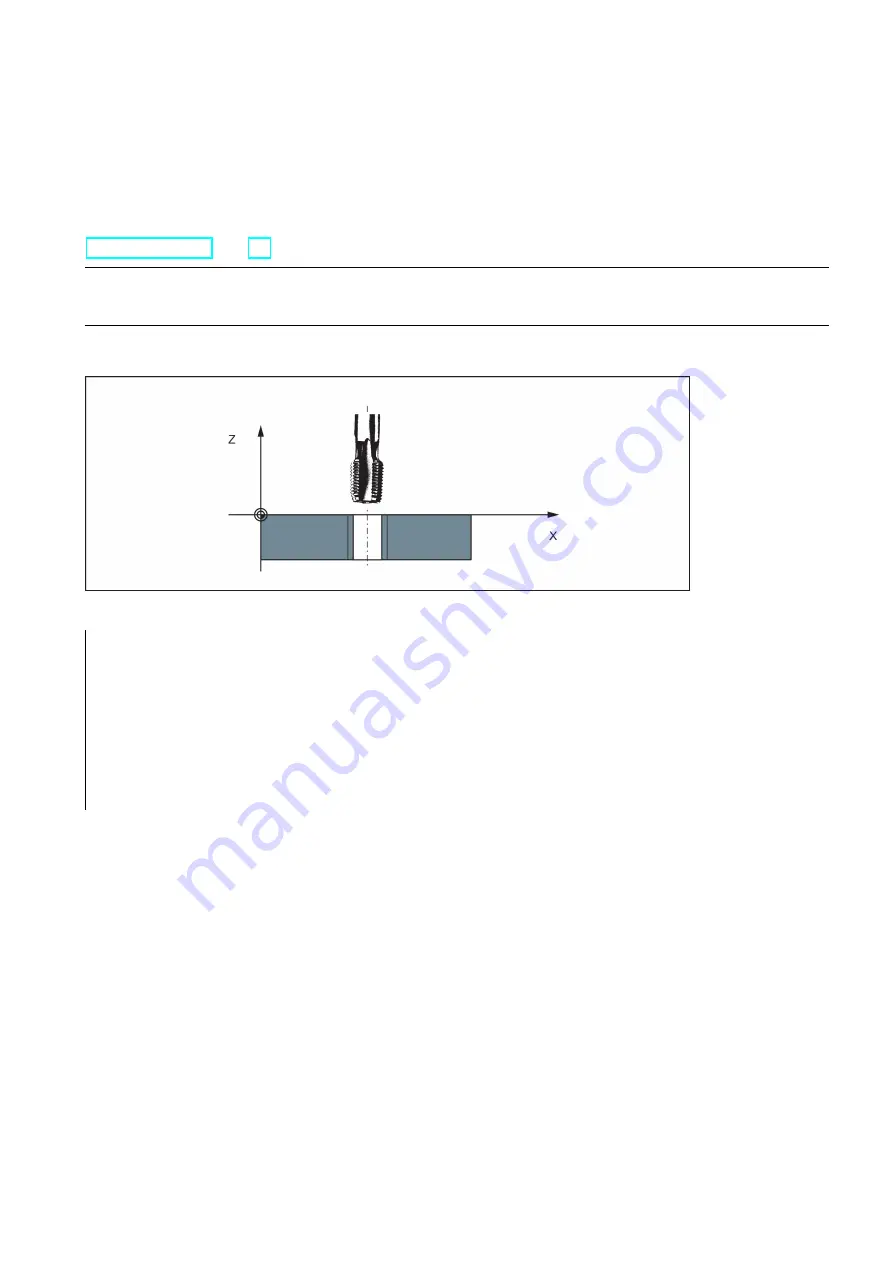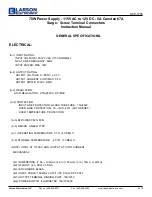
Programming and Operating Manual (Milling)
6FC5398-4DP10-0BA1, 01/2014
81
The compensating chuck compensates the resulting path differences to a certain limited degree.
The drill is retracted using G63, too, but with the spindle rotating in the opposite direction M3 <-> M4.
G63 is non-modal. In the block after G63, the previous G command of the "Interpolation type" group (G0, G1,G2, ...) is active
again.
Right-hand or left-hand thread
Right-hand or left-hand thread is set with the rotation direction of the spindle (M3 right (CW), M4 left (CCW) - see Section
"Spindle movements (Page 87)").
Note
The standard cycle CYCLE840 provides a complete tapping cycle with compensating chuck (but with G33 and the relevant
prerequisites).
See the following illustration for tapping using G63:
Programming example
; metric thread 5,
; lead as per table: 0.8 mm/rev., hole already
premachined
N10 G54 G0 G90 X10 Y10 Z5 S600 M3
; Approach starting point, clockwise spindle
rotation
N20 G63 Z-25 F480
; Tapping, end point -25 mm
N40 G63 Z5 M4
; Retraction, counter-clockwise spindle rotation
N50 X30 Y30 Z20
M30
8.5.3
Thread interpolation: G331, G332
Functionality
This requires a position-controlled spindle with a position measuring system.
By using G331/G332, the threads can be tapped without compensating chuck if the dynamic properties of the spindle and
axis allow it.
If, however, a compensating chuck is used, the path differences to be compensated by the compensating chuck are
reduced. This allows tapping at higher spindle speeds.
Drilling is done using G331, retraction is done using G332.
The drilling depth is specified by specifying one of the axes X, Y or Z; the thread pitch is specified via the relevant I, J or K.
For G332, the same lead is programmed as for G331. Reversal of the spindle direction of rotation occurs automatically.
The spindle speed is programmed with S and without M3/M4.
Before tapping the thread using G331/G332, the spindle must be switched to the position-controlled mode with SPOS=....
















































